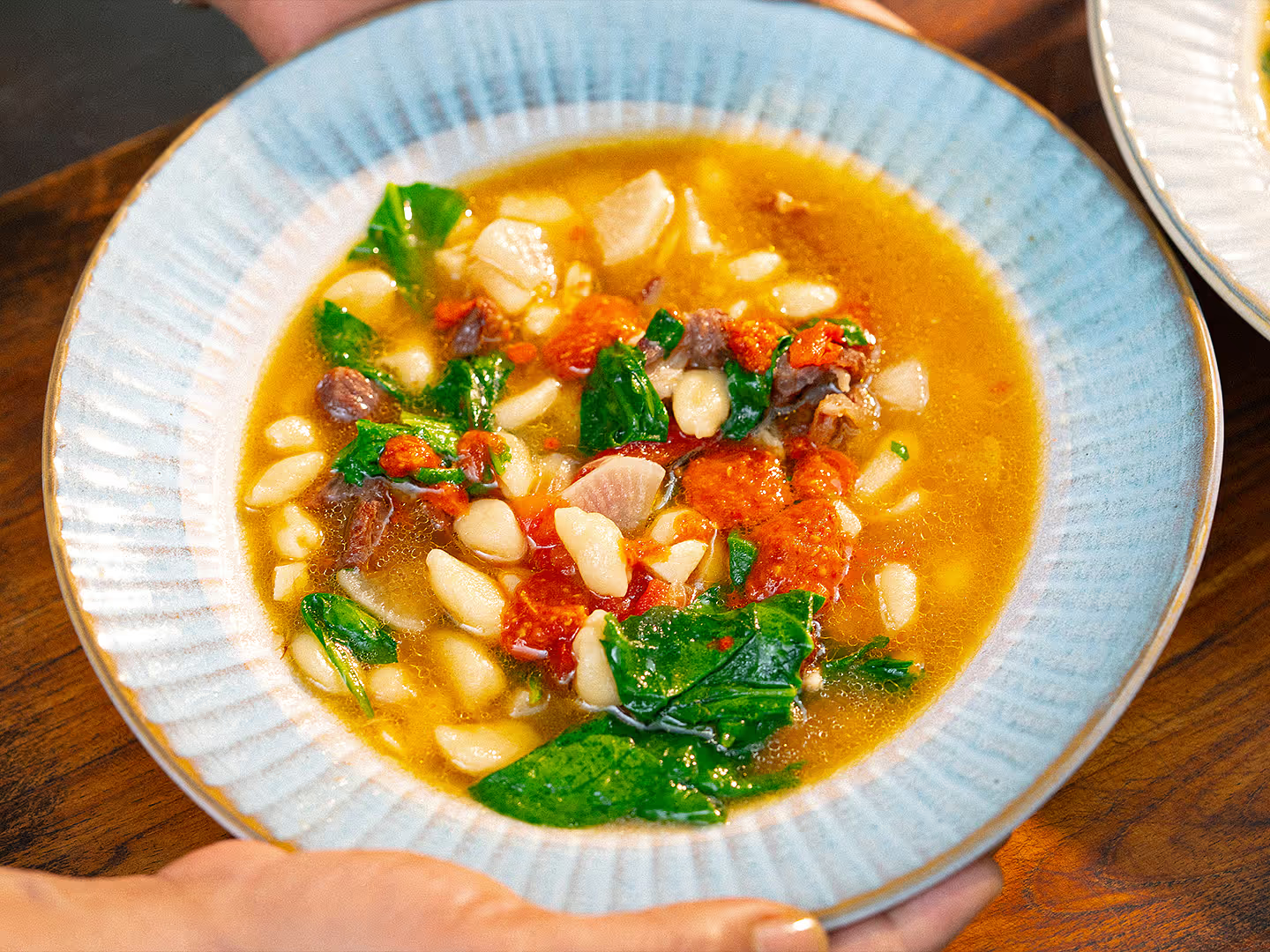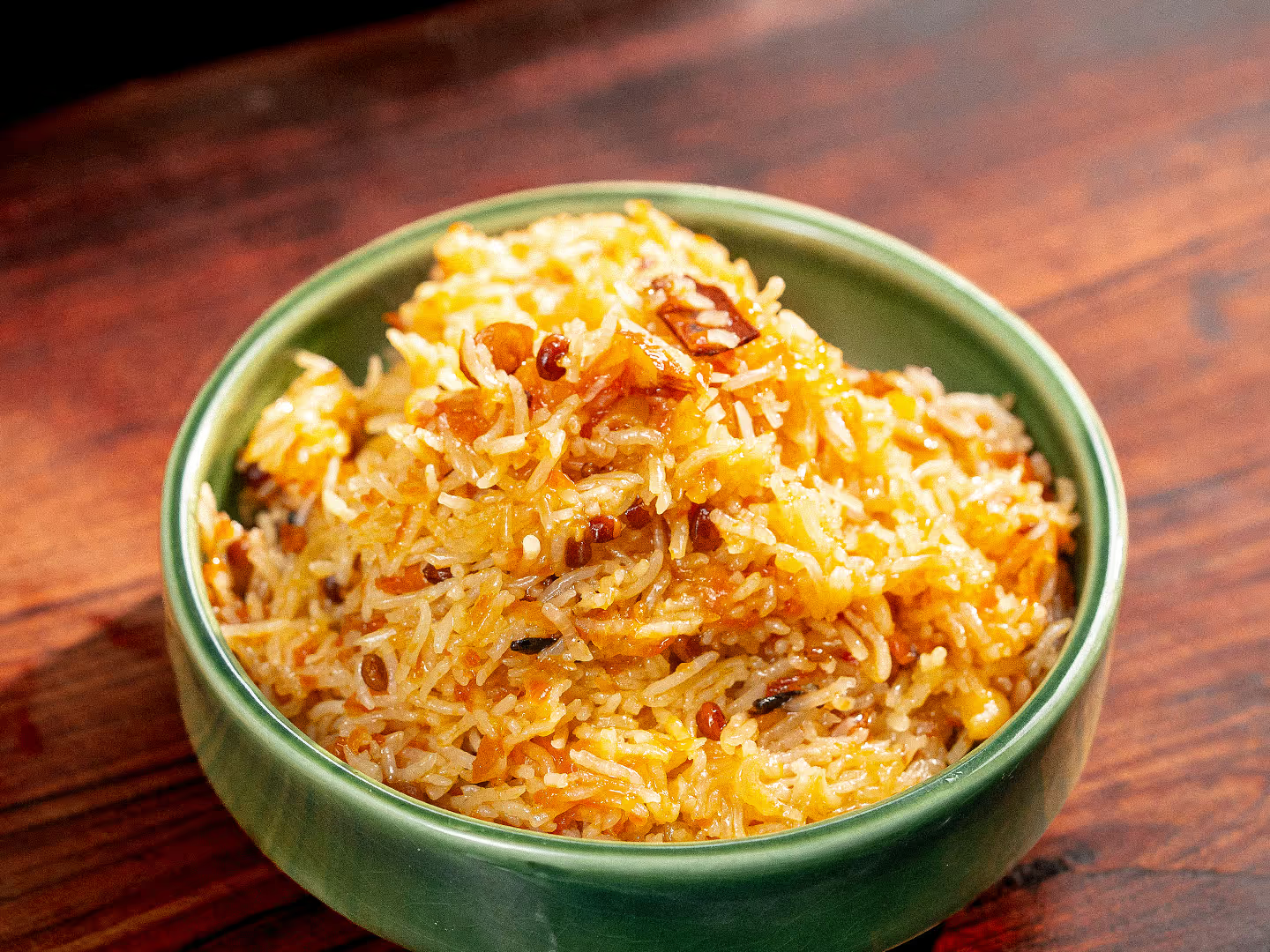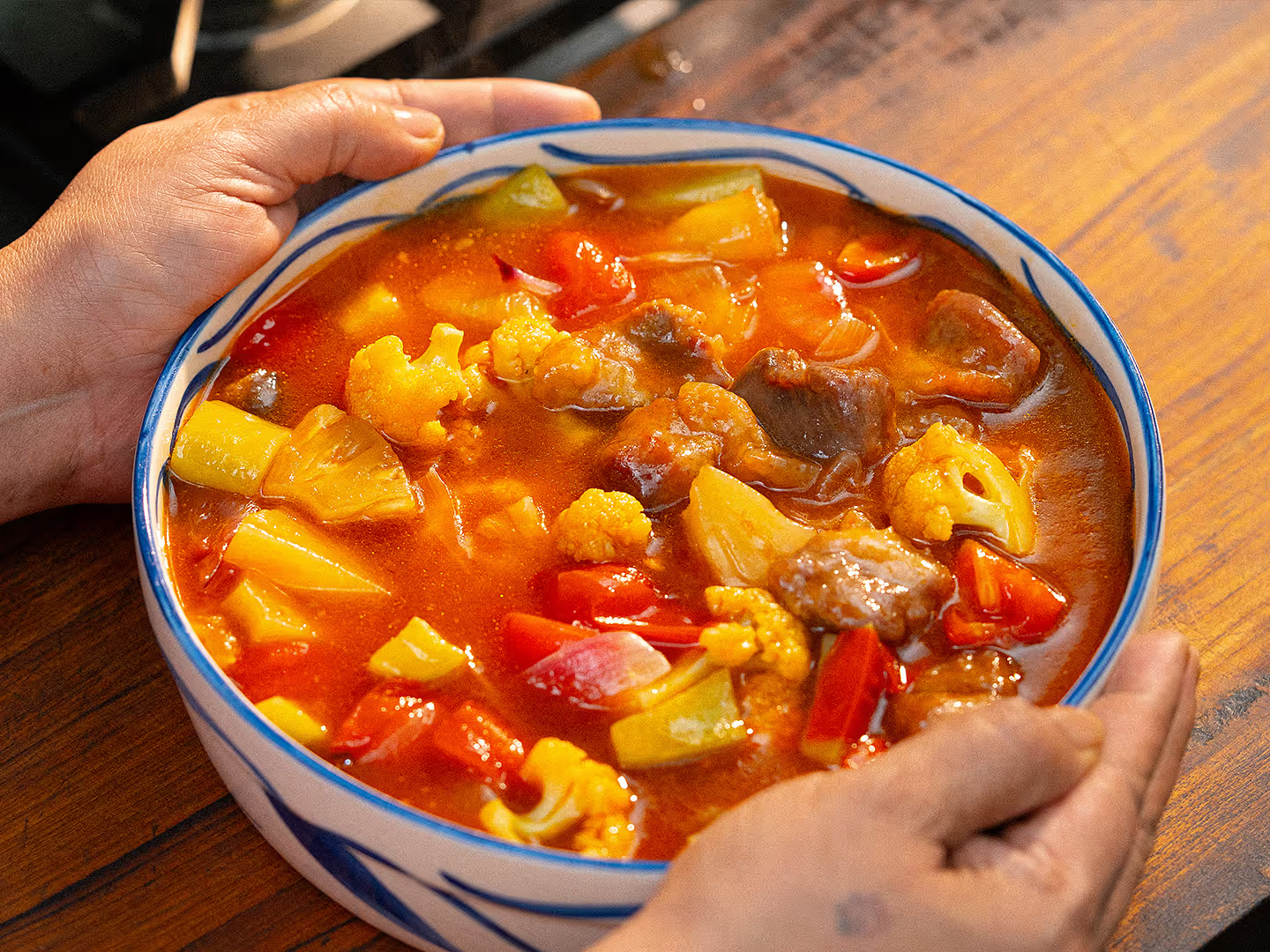Paat pata’r bora
Batter-fried jute leaves, called paat shaak in Bengali, which are in season during the monsoon in Bengal.
- Cooking time30 minutes
- Calorieskcal
Possibly our favourite thing about the monsoons is the availability of paat (পাট) shaak, jute fibre that is used to weave gunny sacs or burlap. Jute is a plant native to Bengal and has been cultivated here for thousands of years. With the setting up of the first mechanised jute mill in India in Rishra in 1855, gunny sacs began to be exported all over the world. Even today 80 per cent of the world's jute is cultivated in the Gangetic delta. Naturally, jute leaves are used extensively in Bengali cuisine. When cooked, the leaf has a mild flavour, and a slightly slimy, fibrous (somewhat like mustard greens) texture. If you don't have access to jute leaves, you can also use spinach leaves.
Frequently Asked Questions
Books in this recipe
Ingredients
- 8 small bunches of paat shaak (jute leaves)
- 70 g maida (all-purpose flour)
- 30 g sooji (semolina)
- 1 tsp posto (poppy seeds)
- ¼ tsp turmeric
- ¼ tsp red chilli powder
- 3 g salt
- 12 g sugar
- 5 g mustard oil
- ~135 g water
- oil for deep-frying
Method
- Check the leaves for bugs or dirt. Soak and wash thoroughly in water. Drain excess water. Each fritter is made with a bunch of 4–5 leaves held together by the stem.
- Prepare a batter with maida, sooji, poppy seeds, turmeric, red chilli powder, salt, sugar, mustard oil, and water. Let this rest for 15 minutes. The semolina will soak up water, swell, and thicken the batter. If you want a lighter coating add a little more water.
- Heat oil for deep-frying. Dip each bunch of leaves in the batter and gently lower into the hot oil.
- Turn every minute and fry until brown and crispy.































